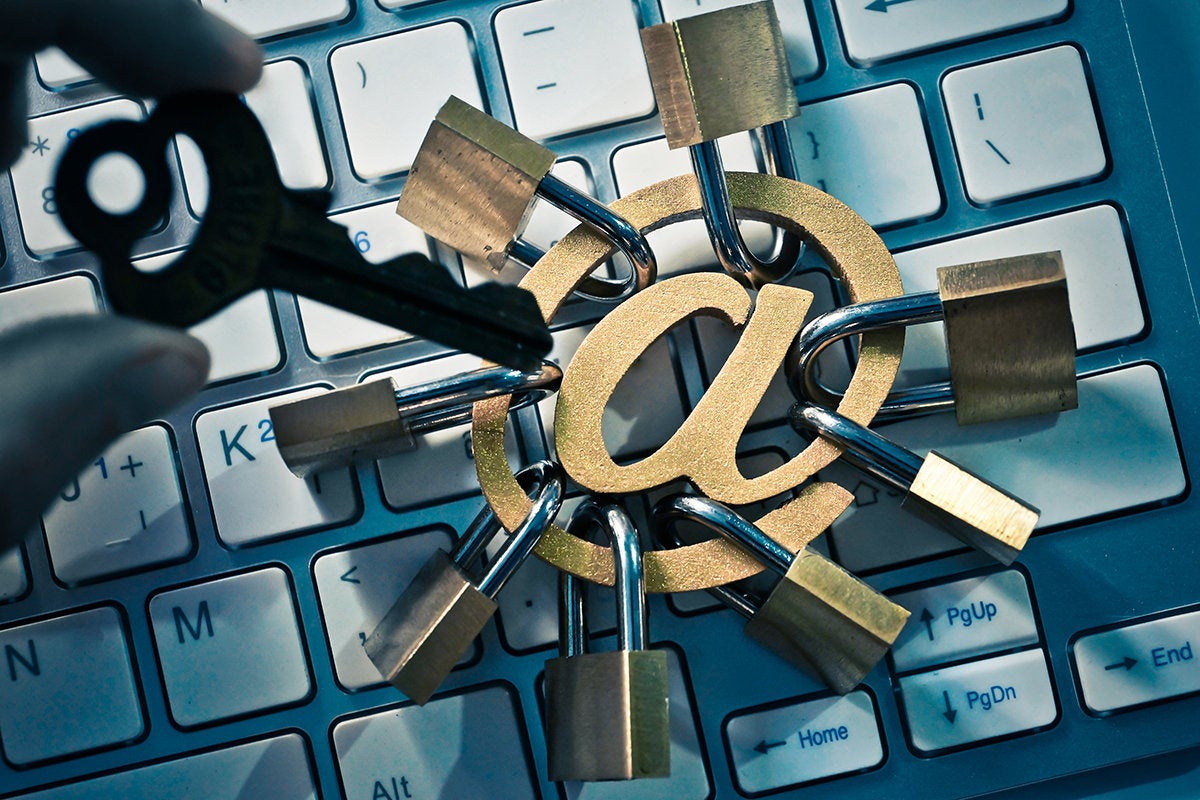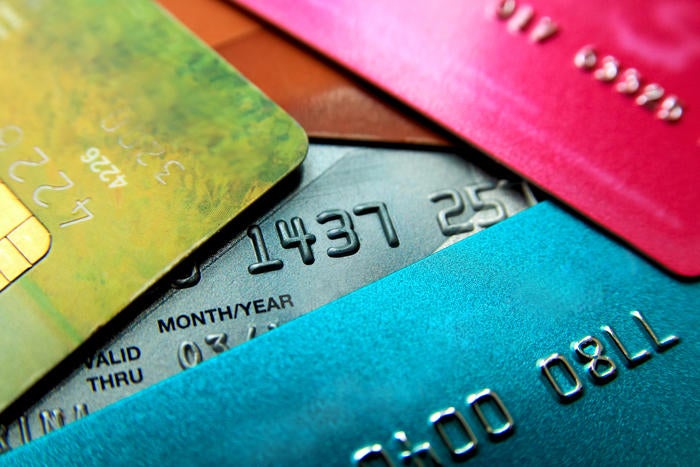What to do after a data breach: 5 steps to minimize risk - berglinsom
IT happened again. Another major web service lost control of its database, and now you're scrambling to stay in advance of the bad guys. As often as we hate them, data breaches are here to stay. The good news is they don't have to elicit full-blown panic no more matter how nociceptive the pilfered information might equal. There are commonly some identical simple steps you can read to minimize your exposure to the potential threat.
Here's how.
Update 9/24/2018: Credit freezes are now free in the US (as is temporarily lifting them); we've updated Step 4 of our guide to reflect the new law.
Abuse 1: Determine the hurt
 Thinkstock
Thinkstock The first thing to figure knocked out is what the hackers took. If they got your username and password, for example, in that location's miniature point in alerting your credit card company.
News articles and caller statements should lay down it very clear what leaked. Was it just your email address, or was it your word data too? What about credit card game (if applicable) or personal data like reclusive messages?
This is the prototypic measure in creating an effective retrieval plan, but before you take any action there's a critical follow-up question to ask.
Step 2: Can the bad guys use your data?
Hackers use up data all the time, just many times the stolen data is useless thanks to certificate practices that include terms like "hashed," "salted," and "encrypted." If the information is in the form of "cleartext," that substance no cryptography has been used, and it's just As easy to read and manipulate as a Word document Oregon a regular email message.
Hashed information, but then, is data that has been disorganised in a such a fashio that you cannot decrypt it back to austere text edition. Hashing is often used for password databases, for example.
Not wholly hashing methods are equal, however, and sometimes they are reversible. Every bit a second line of defence, a company Crataegus laevigata add what's called a salt—random data—to make decoding harder. The stern line with hashing is that you'll need to probe a bit further to see whether the company believes the data is usable OR not.
Last, encoding is acknowledged to follow a two-right smart scrambling process that only allows someone with the "distinguish" (unremarkably a password or password file) capable of decoding the information.
Even if hackers took information that is hashed operating theatre encrypted, sometimes companies will advise changing your password regardless, just to be innocuous.
Step 3: Change that password
 Thinkstock
Thinkstock If you need to change your password then glucinium active. Shift your password straight off, and don't waitress for a warning email or substance from the troupe, if likely.
If you've been using that selfsame password along former sites vary IT there as comfortably. A single data breach can easily undergo down former accounts if you're reusing passwords. Don't do that.
Stair 3a: Start using a password manager
Now is a groovy time to start using a password managing director if you aren't already. These programs give notice create original, hard-to-guess passwords and save them for all online chronicle you have. They also protect your passwords with encoding, and (typically for a fee) make them available across all your devices.
See our roundup of best watchword managers—and just do information technology. Our ongoing favorite is LastPass, but Dashlane ISN't far behind (but it is more pricey).
Passwords just aren't enough anymore, which is why it's also a good estimate to enable two-factor out authentication (2FA) on any of your accounts that support it. Two-factor hallmark means your web service will require a secondary, six-digit code before permitting access to your account—even with the right password.
This is a great way to slow down the bad guys. Unfortunately, it too has the same effect along you. Virtually services only call for a 2FA code every 30 days per twist, or in some cases just once on a single browser from a single device. So information technology's not besides terrible.
The best room to use two-factor authentication is with an app or device dedicated to generating these codes. Receiving SMS codes is non advised, because they are vulnerable to a diversity of relatively trivial attacks.
If you pauperization help picking a two-ingredien authentication app check tabu our roundup of the topper 2FA apps.
Step 3c: Produce a dedicated password recovery email
 Thinkstock
Thinkstock Many websites allow you to ready a ad hoc recovery email treat that is separate from your primary account email. This is the email address where you get links to reset your word afterwards clicking the "Forgot password?" link happening a website.
It is high-grade to have a specific email address that is only for account recovery emails and is not connected to your identity—if your Gmail is JAndrews don't usage JAndrews@outlook.com, for example. If you use your regular email for account recovery, hackers prat target that email address, and, if they compromise information technology, take over your online life.
As with any other electronic mail account, make sure your recovery mail is protected with a hard to guess password and two-factor authentication.
 Thinkstock
Thinkstock If your credit card number was compromised then you call for to alert your bank or credit wit supplier. If it was a particularly large breach, there's a adept chance your bank already knows around it, but it's still a good theme to let them screw you were strike.
You want to make a point you talk to a representative, and tell them what's happened. The company leave likely cancel your card and payof a parvenue one.
Don't wait on this one. Apprise your bank or reference card company compensate departed to control you aren't held causative any fraudulent charges. If a debit menu telephone number was purloined, this step is doubly important. Non exclusive because that means cash testament be leaving your account with all bad charge, only also because debit cards don't have the same recovery protections as credit card game.
Step 4a: Take back sue with the credit bureaus
Get a fraud alert on your credit record with the triad John Roy Major credit bureaus: Equifax, Experian, and TransUnion. You can also go a step far and put a free acknowledgment freeze on your records, which prevents anyone from opening an invoice using your name and social security number. (That includes you as well—but you can temporarily aerodynamic lift the freezes with no charge, too.)
Capitalize of your right to an annual free credit report from each of the cardinal reporting companies. By staggering the reports, doing one all four months, you can hold over an eye on your credit paygrad passim the year.
Step 5: Consider burner card game
Another good motivate is to die with limited-use burner debit cards that are abutting to your current camber account, but aren't your actual debit entry cards. Privacy.com allows you to do this, and IT's a good way to protect yourself. Instead of using your factual card bi, you stern use burner card game with all kinds of limits on them such as a card that's only for Netflix, or cards limited to a maximum of $100. You can even produce a ace-clip-use card for a major buy. It's a very handy service, and if your burner card ever leaks you potty scarcely blue-pencil it and start complete.
Breathe easy
Major database breaches nurse, but they are a regular occurrence, meaning it's not a matter of if you'll undergo hit, but when. The good news is that being a bit routine active can help avoid the headaches that come from personal identity stealing.
Source: https://www.pcworld.com/article/401824/what-to-do-after-a-data-breach.html
Posted by: berglinsom.blogspot.com

0 Response to "What to do after a data breach: 5 steps to minimize risk - berglinsom"
Post a Comment